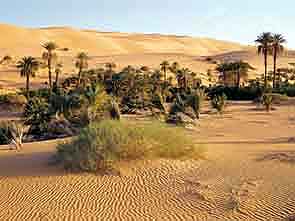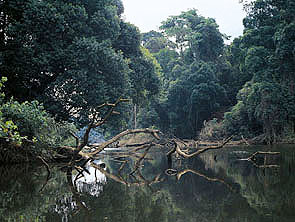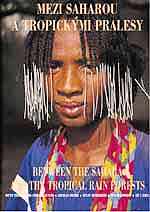The exhibition travels on towns of Czech and Slovak republics:
Prague, National Museum: 12 October 2001 - 28 February 2002
Decin, Regional Museum: 15 March - 17 June 2002
Frydek-Mistek, Museum Beskyd: 11 July - 22 September 2002
Bratislava, National Museum: 8 October 2002 - 31 January 2003
Breclav, City Museum and Gallery: 27 February - 1 June 2003
Hodonin, Regional Museum: July - September 2003
The exhibition shows the environment of the Sahel-Sudan band of Africa, which offers very important information for anthropological research. This region is phenomenally rich: it is a contact zone, where the agricultural communities of the African savannah encounter the last hunter-gatherers of the equatorial rain forests and the pastoralists living south of the Sahara's edge. The overall aim is to synthesise the results obtained in various disciplines that contribute to a deeper understanding of the life of the local populations, and show that the traditional cultural values of African society are today ever more threatened by a broad range of trends towards modernisation.
The 42 individual themes presented in the exhibition combine knowledge provided mainly by ethnology, archaeology and anthropology. The display material is drawn from several ethnic groups in northern Cameroon, where the organisers undertake annual anthropological expeditions based on earlier ethnological research; the Fali society of the Tinguelin massif north of Garoua has, for instance, been the subject of intensive ethnological research by Prof. J.-G. Gauthier since the 1956.
The exhibition is composed from colour photographs of A3 form (30x40 cm), ethnographical object associated with the Fali society, video record of burial rituals of Fali and the archaeological objects which testify the cultural end ethnic influences coming from Lake Chad area. The exhibition is divided into five sections. The NATURE & SUBSISTENCE contains the themes as the landscape, water, flora, fauna, hunting, fishing, agriculture, pastoralism, domestication, foodstuffs, trade and languages; LIFE CYCLES contains the themes as dwellings, childhood, upbringing, school, courtship, marriage, kinship, population dynamics and burial; TRADITION & CUSTOMS contains the themes as smiths, potters, tanning, musicians, artistic expression, care for the appearance and gender roles; PEOPLE & SOCIETY contains the themes as the cult of ancestors, rituals, prehistoric carvings, settlement, Sao, towns, states, islamisation, the Fali, the Mafa, the Shuwa, the Kanuri and ethnicity. The last theme is the THE ARCHAEOLOGY OF THE IMPERIAL EXPANSION showing culture and ethnical consequences of political expansionism of medieval Borno empire.
Finally, the exhibition offers, in addition to its scientific and popularisation aims, some other view to African continent, different from that which is presented by the current media - full of misery, war, violence and illness - by recalling the real human values of a "different" cultural sphere.
More about the exhibition...

People of the Mandara Mountains


Front cover
Contents
Ukázky kapitol:
School (pages 76-79)
Rituals (pages 134-137)
Objects of daily use (page 212)